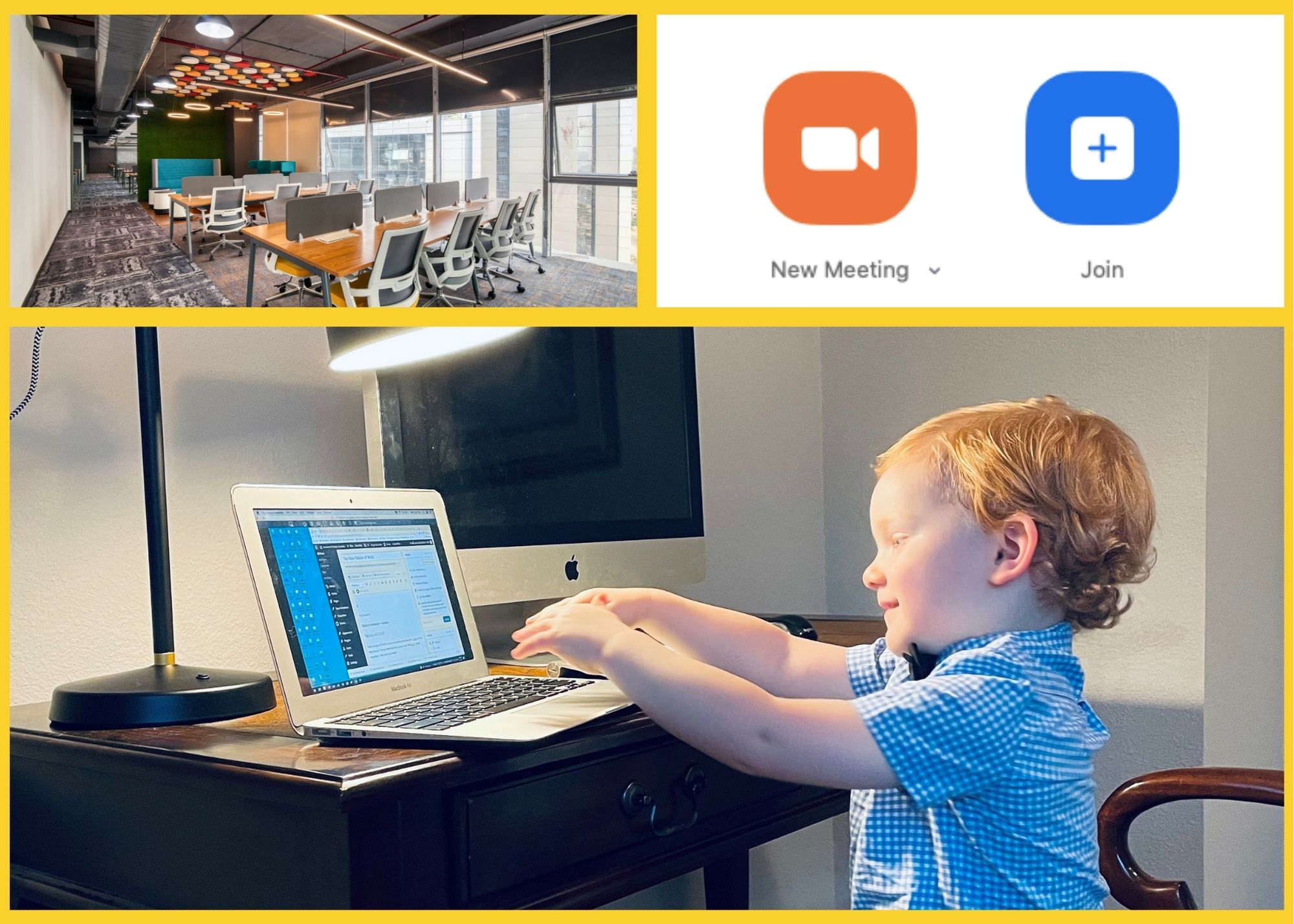A New World of Work
September 23, 2021

Photo by myHQ Workspaces on Unsplash
The Days of COVID
First, the days of COVID; now we are nearing the Days After Covid and the Next Normal. The term New Normal is just so, well, Pre-Covid. Hardly remember it. But what’s up ahead?
The Nature of Work
The nature of work is now being thoroughly analyzed and re-thought, both as a result of the pandemic, but also because of changes that were in place before the pandemic that now have been accelerated as a result of the lockdowns, social distancing and Work From Home (WFH) experiences. Here are some observations and quotes; pieces of a jigsaw puzzle without a clear picture of what it will finally look like. Maybe by combining these things we can try to draw some conclusions about the impact of the Next Normal on commercial real estate.
First, we have all become skilled at using Zoom or Teams for virtual meetings and to enable WFH arrangements. This cuts down on commuting time, business and air travel, lunch meetings at restaurants, and business hotel use, all impacting real estate usage.
Work From Home
WFH advocates argue that it makes us more productive because you can work on what used to be commute time, have fewer distractions for idle office chit-chat and coffee breaks and you can work late into the evening or early morning hours from the comfort of your home. Critics say that you lose time from productive work to home distractions like children, your favorite TV shows, computer games, convenient kitchen access, etc. You lose the discipline of dressing properly, and starting and finishing tasks on time. You don’t have colleagues nearby to ask for help or to provide input in order to accomplish work tasks. You lose the ability to instantly coordinate, get immediate feedback and have those important ‘Ah-Ha’ moments from casual face-to-face interactions.
I think a good analogy is an athletic team. One of the best things about sports is the camaraderie and team spirit you share, whether winning, losing, practicing, or improving and learning what works and what doesn’t. I know in commercial real estate brokerage the quick mentor/mentee moments mostly come in person. Brokers need to be able to share their daily experience, the highs and the lows, the triumphs and disappointments of a very difficult and frustrating job. It is just not as effective on a phone call or Zoom conference; like playing the piano with gloves on – you get the notes and the melody right, but it just doesn’t sound as good.
Employee Turn-Over Rate
One colleague made the comment that worker turn over has been very high among new hires. New college graduates got hired but work remotely so their whole office experience is on a computer. Camaraderie with a group of 3”X 3” 2-dimensional squares is difficult and doesn’t build loyalty. So it is extremely easy to simply “log off” of one company and “log on” to another, job hopping, but never gaining a real insight into the company, its leadership, fellow employees, work ethic and customer relations that make up the business world.
There are about 60-million office workers, those who sit more for a living than those who are out and about. In many regions of the U.S. only about one-third are back in the office. In Texas it is about half or a little higher. It is unfortunate that masks and vaccine mandates have become a political issue.
Back to the Office, Hybrid, & Fully Remote
About 44% of companies are coming down firmly that you must be in the office, like the old days, or you won’t have a job. Others are going hybrid, where workers are in the office 3 days a week and work from home 2 days a week. Globally, 16% of companies are fully remote according to an Owl labs study. These days, workers have the power, not the bosses. In order to keep good employees, some business segments and companies must be as flexible as they can. One example is tech companies. They have actually had workers relocate from major west coast cities to cities farther in the heartland to Boise, Idaho and Austin, Texas, for instance. But the catch is they make less money because they are working remotely from lower cost cities. It’s a reverse Cost of Living allowance.
Two-Timing Employees
Then, there was the Wall Street Journal article about the over achievers – folks working two jobs remotely at the same time! They would be on two zoom calls switching back and forth as needed. Or be on a zoom call, while working on a proposal for the other company at the same time. One guy got busted when a vendor who serviced both companies noticed he was on both invoices. Ooopps!
Shrinking Workforce
Secondly, the Bureau of Labor Statistics reports there are presently 10.9-million jobs available and only 9-million people to fill them. Based on that alone, we should be at 0% unemployment not just under 6%. Before Covid the U.S. workforce was composed of 164.6-million people, but the workforce has shrunk. Three-million people retired from the workforce and another 1.5-million decided not to return. Some preferred to become stay-at-home parents and forego the extra salary. Others must care for elderly or ill family members.
High Paying Jobs Unfilled
So why isn’t everyone working now? A mismatch in job skills. For instance, we will need 35,000 new airline pilots in the next ten years, but only about 2,000 per year come out of military aviation. It takes years and skill to fly commercial planes. We are not just short on waiters, clerks and cooks. Long haul truckers have had a dire shortage for some years. Construction labor, welders, coders, computer programmers, M.D.s, health care professionals, teachers – you name it. High skill and good paying jobs go begging, because not enough college graduates are training for these fields and high school graduates are not entering the right vocational training. Plumbers, for instance, get paid very well and are in high demand as independents retire, yet not enough are entering the field.
San Antonio CRE Market
Thirdly, millennials who are marrying, having children and moving to the suburbs are driving the demand for homes. Many institutional real estate players have gotten into the market for single family rentals, competing or out-competing with these home buyers, and driving prices even higher. Builders have been under-building to demand for some years, because of land costs and difficulties in getting development entitlements from cities. Couple this with higher building material costs, due to supply chain disruptions and scarcity of new home lots, and the housing industry is hard pressed to meet demand. The white hot market of this past spring has cooled, but the tight market will last for years to come. Subdivision expansion will drive more suburban convenience center construction. No new fashion malls are on the horizon, though. Office buildings will be slow to break ground as the office use conundrum sorts itself out over the next several years. Fortunately, Downtown San Antonio and Austin still look very strong, despite the pause brought on by the Days of Covid. We’re back, baby!
Income Gap
Finally, a concern that is often voiced, is the growing income gap. I foresee that the Days After Covid and the Next Normal will see an increase in income disparity. Those who have the gumption and work ethic will be able to advance faster and farther because of great opportunities, while those who are unable to capitalize on the opportunities will not advance as quickly. We live in a marvelously free society, and with that freedom comes opportunity. As the Cato Institute says, “The fact that some people become wealthy does not mean that others will become poor.”

